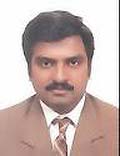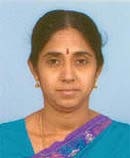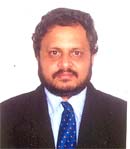Contents: 2024 | 2023 | 2022 | 2021 | 2020 | 2019 | 2018 | 2017 | 2016 | 2015 | 2014 | 2013 | 2012 | 2011 | 2010 | 2009 | 2008 | 2007 | 2006 | 2005 | 2004 | 2003 | 2002 | 2001
2008, 1
Modeling and simulation of underwater high frequency noise spectrum using artificial neural networks
language: English
received 07.09.2007, published 14.01.2008
Download article (PDF, 82 kb, ZIP), use browser command "Save Target As..."
To read this document you need Adobe Acrobat © Reader software, which is simple to use and available at no cost. Use version 4.0 or higher. You can download software from Adobe site (http://www.adobe.com/).
ABSTRACT
In this work, estimation of high frequency underwater ambient noise spectrum carried out using neural network is reported. The periodic ambient noise data were measured at 5 m depth in Bay of Bengal using omni directional hydrophone. The data were acquired using portable, broadband high frequency data acquisition system. The noise level at high frequencies in the range of 5 kHz to 12 kHz was analyzed for the entire data set (N=100). The influence of wind speed covering a rage of 2.5 m/s to 9 m/s and wave height in the range of 0.2 m to 2 m were used for the analysis. Feed Forward Neural Network architecture using Levenberg-Marquardt (LM) algorithm was employed and the network model obtained after training was used to estimate the noise level. Analysis of experimental data reveals that the noise level decreases with increase in frequency for the observed range of frequencies. The noise level increases with increase in wind speed and the variations were found to be non linear in nature. Similar observation was recorded for the considered range of wave height. Further it appears that the proposed method is useful in the estimation and interpolation of underwater Noise Spectrum Level (NSL) for the considered frequency range and it is observed through Mean Squared Error analysis. As the underwater measurements are often inhospitable due to the remote oceanic regions and conditions, these studies seems to be relevant. In this work, the objectives, experimental arrangement, data acquisition, neural network based modeling and analysis are presented in detail.
Keywords: Feed forward Neural Network (FNN); Ambient noise; Noise Spectrum Level (NSL); Bay of Bengal; Mean Squared Error (MSE).
7 pages, 4 figures
Сitation: S. Ramji, G. Latha, S. Ramakrishnan. Modeling and simulation of underwater high frequency noise spectrum using artificial neural networks. Electronic Journal “Technical Acoustics”, http://www.ejta.org, 2008, 1.
REFERENCES
1. Wenz G. M. Acoustic Ambient Noise in the Ocean: Spectra and Sources. J. Acoust. Soc. Am., 1962, 34(12):1936–1956.
2. Hodgkiss S., Fisher J. Vertical Directionality of Ambient Noise at 32N as a function of Longitude and Wind Speed. IEEE Journal of Oceanic engineering, 1990, 15(4), 335–339.
3. Urick R. J. Ambient Noise in the Sea. Peninsula Publishing, 1984.
4. Kuperman W. A., Ferla M. C. A Shallow Water Experiment to Determine the Source Spectrum Level of Wind Generated Noise. J. Acoust. Soc. Am., 1985, 77(6), 2067–2073.
5. Piggott C. L. Ambient Sea Noise at Low Frequencies in Shallow Water of the Scotian Shelf. J. Acoust. Soc. Am., 1964, 36(11), 2152–2163.
6. Cato D. H. Ambient Sea Noise in Waters Near Australia. J. Acoust. Soc. Am., 1976, 60(2), 320–328.
7. Chapman N. R., Cornish J. W. Wind dependence of deep ocean ambient noise at low frequencies. J. Acoust. Soc. Am., 1993, 93(2), 782–789.
8. Wilson J. H. Very Low Frequency Wind-Generated Noise Produced by Turbulent Pressure Fluctuations in the Atmosphere near the Ocean Surface. J. Acoust. Soc. Am., 1979, 66(5), 1499–1507.
9. Nicolaos B. Karayiannis and Mary M. Randolph-Gips. On the Construction and Training of Reformulated Radial Basis Function Neural Networks. IEEE Trans of Neural Network, 14, 835–846, 2003.
10. Greene, R. L. and Field, R. L. Classification of underwater acoustic transients by artificial neural networks. IEEE Conf. Neural Networks for Ocean Engineering, 110–115, 1991.
11. Roth M. W. Survey of neural network technology for automatic target recognition. IEEE Trans. on Neural Networks, vol. 1, N°1, 28–43, 1990.
12. Simon Haykin. Neural Network: A Comprehensive Foundation. Prentice Hall, New Delhi, 1994.
13. Sriraam N, Eswaran C. Context Based Error Modeling for Lossless Compression of EEG Signals Using Neural Networks. J. Med. Syst., 2006, 30, 439–448.
14. Limin Fu. Neural network in computer intelligence. McGraw-Hill International Editions, Singapore, 1994.
15. Welch P. D. The use of fast Fourier transform for the estimation of power spectra: a method based on time averaging over short, modified periodograms. IEEE Trans Audio Electroacoust., 15, 70–73, 1967.
 |
S. Ramji did his M.Tech in process control and instrumentation at Regional engineering college, Trichy. He started his career with Fluid Control Research Institute, Pallakkad and later joined National Institute of Ocean Technology, Chennai as a scientist. He is working on underwater noise measurement techniques and data processing and analysis and has published papers in the field. He is currently undergoing his PhD at Anna University. e-mail: ramji(at)niot.res.in |
|
 |
G. Latha is a mathematician serving as senior scientists in National Institute of Ocean technology. She has been extensively working on underwater noise measurement techniques and data processing and analysis of ocean ambient noise and characterization. She has published papers in International journals in this field. |
|
 |
S. Ramakrishnan is serving an Assistant Professor in the department of Instrumentation Engineering, M.I.T campus, Anna University. He is extensively working in the Field of Biomedical engineering and he has published more than 30 papers in journals and conferences. |
|
